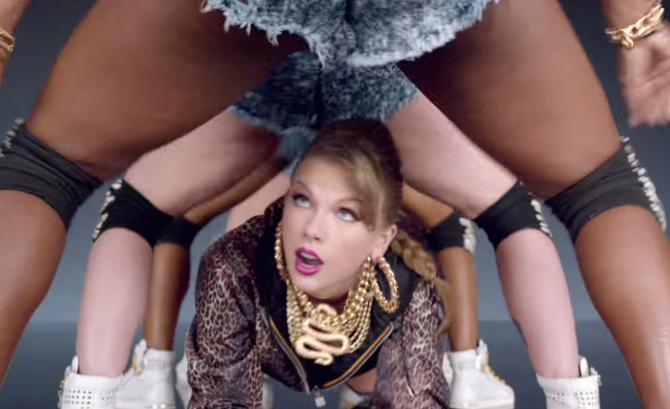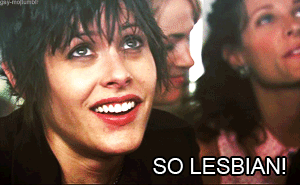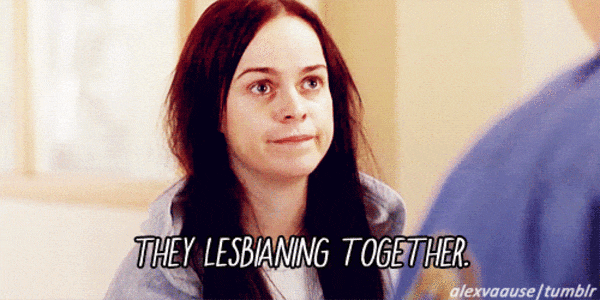Gaylor Swift: A queer reading of Taylor Swift’s 1989
By Matilda Douglas-Henry
Being a lesbian and pop culture fanatic can often feel counterintuitive. Every celebrity who I find outrageously attractive is typically straight. With every gay character in film or television comes another crushing realisation that the actresses who play them have a Hollywood bro boyfriend.
It’s made all the more problematic because I am hopelessly in love with the straightest celeb of all: Taylor Swift. Her undeniable heteronormative standards – made painfully evident by the very gross social media palaver she puts on to honour her bulky life partner Calvin Harris – is a bitter pill for me to swallow.
I much preferred her in 2014. It was a simpler time. She was proud of the fact that she was single. She problematically brought the term ‘squad’ into our daily lexicon because she travelled exclusively with a troupe of very rich and attractive women. Much to my delight, she publicly slandered the need to have a boyfriend. I suppose I was thrilled by this in large part because Taylor’s message underpinned my extensively-researched theory: that she is a lesbian.
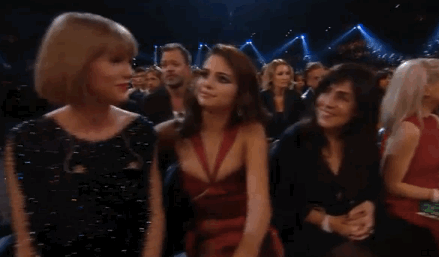
We’ll start piecing together the evidence with a 2014 performance at the iHeartRadio Music Awards. Taylor sang one of her most beloved songs that propelled her into the pop spotlight – the rapturous yet angsty “I Knew You Were Trouble”. Allegedly about her relationship with tween Harry Styles, Taylor chose to make a point of changing the pronoun in the lyrics. Thus, the song became a bit more interesting as Taylor pined for a lost love – “She never loved me/or her/or anyone/or anything”. Granted, the audio of this recording is pretty grainy, but I interpreted it as I saw fit.
A natural conclusion followed a few months later. Taylor was spotted at a gig with her model best friend Karlie Kloss, kissing, in true romantic fashion, on a balcony. The photo was taken from very far away. Grainy, again, is how I would describe the quality of the source. Taylor took to Twitter to address the situation – saying something to the effect of “can the media please stop telling the world that I’m dating my best friends” – yet never outright denied the smooch.
It provoked me to take a much more realistic approach to Taylor’s sexuality. Perhaps she’s not a lesbian, but a cool queer babe who doesn’t believe in ‘boundaries’ and likes to kiss her best friend because she can (and because her best friend is Karlie Kloss).
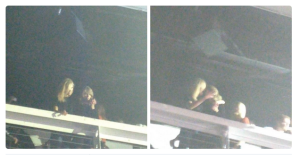
Thus my obsession grew. My brain could no longer comprehend a world in which Taylor was straight. And this was only exaggerated when I found my queer clincher: her magnum opus (and the best pop album of all time), 1989. To me, every song sounds like a coming out anthem, and here I’ll reflect on just a few (because if I really went for it I would never stop).

‘Welcome to New York’ is a telling start. She’s in a new city. It’s exciting. It’s different. Taylor begins her queer journey in the way we all do: seeking solace in the bright lights of something new; lights that “never blind” her, where she sees “boys and boys and girls and girls”.

‘Blank Space’ is about the presumptuous nature of the media. They portray Taylor as something she’s not, and she’s not cut up about it anymore. Instead, she’s written a satire about the straight standards imposed upon her by commercial media. “Boys only want love if it’s torture/don’t say I didn’t warn you” is her way of saying a big fuck you to heteronormativity.
‘Style’ is not about Harry Styles. “Long hair/slicked back/white t-shirt” is obviously describing Shane McCutcheon from the L Word.
Taylor loves her wild metaphors. Both ‘Out of the Woods’ and ‘I Know Places’ tap into that dark, confusing place when you love someone who is ashamed of their sexuality. As she belts “are we out of the woods yet?” over and over, I’m reminded of those girls I would drunkenly kiss at a party and naturally ended up loving them but they wouldn’t have a bar of me in the light of day.
‘How You Get the Girl’ is the most self-explanatory lesbian anthem ever. And perhaps most interestingly, on the deluxe version of 1989, Taylor ends with her killer banger ‘New Romantics’. Here, she celebrates the eponymous late 70’s pop culture movement in the UK. This was a world where everyone was synth-heavy and sexually fluid; where gender binaries were bullshit, and androgyny was adored.
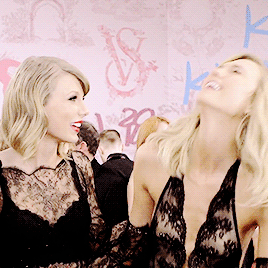
Taylor Swift is the most commercially successful pop star in the world. Her stadiums are packed with pre-pubescent bodies who know all the words to every track. But as a lesbian (who is not middle-aged but certainly feels that way) who oft-vomits at the sight of straight white people existing, I can assure a more cynical listener that there is a lot more to 1989 than you might think.

